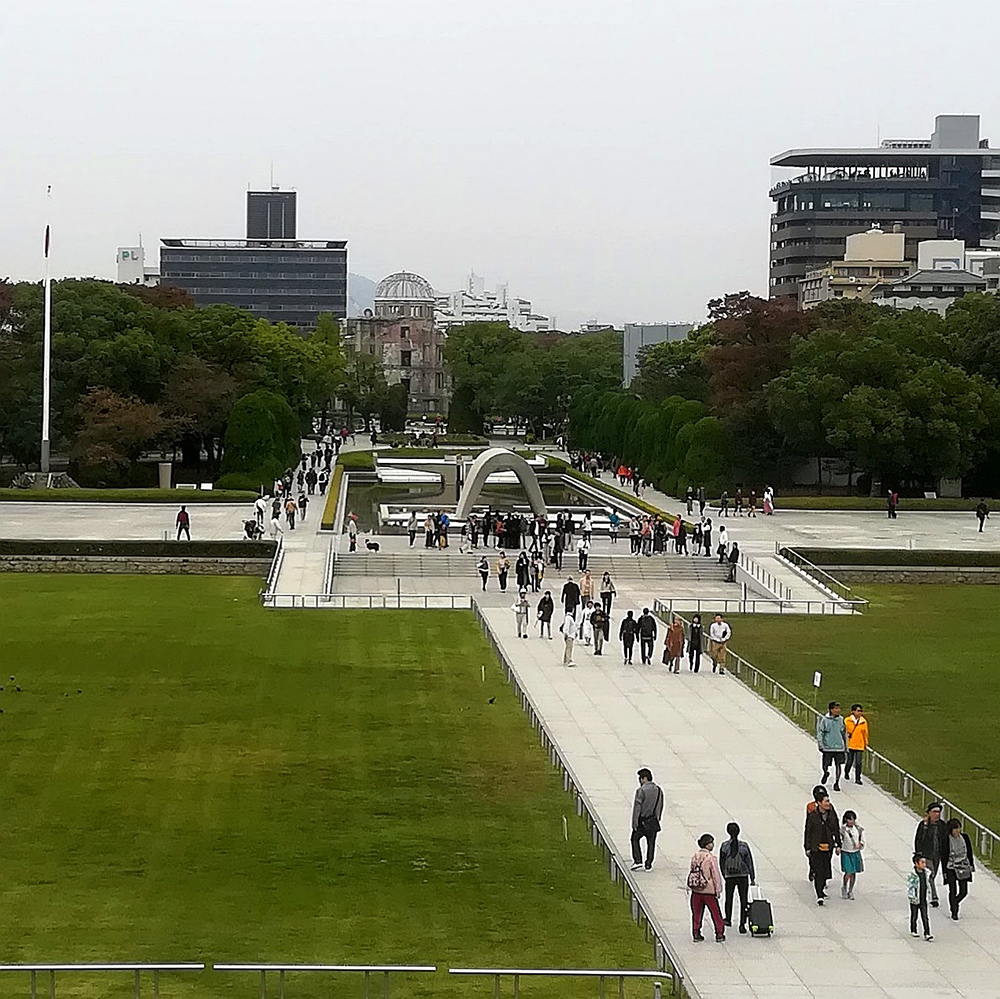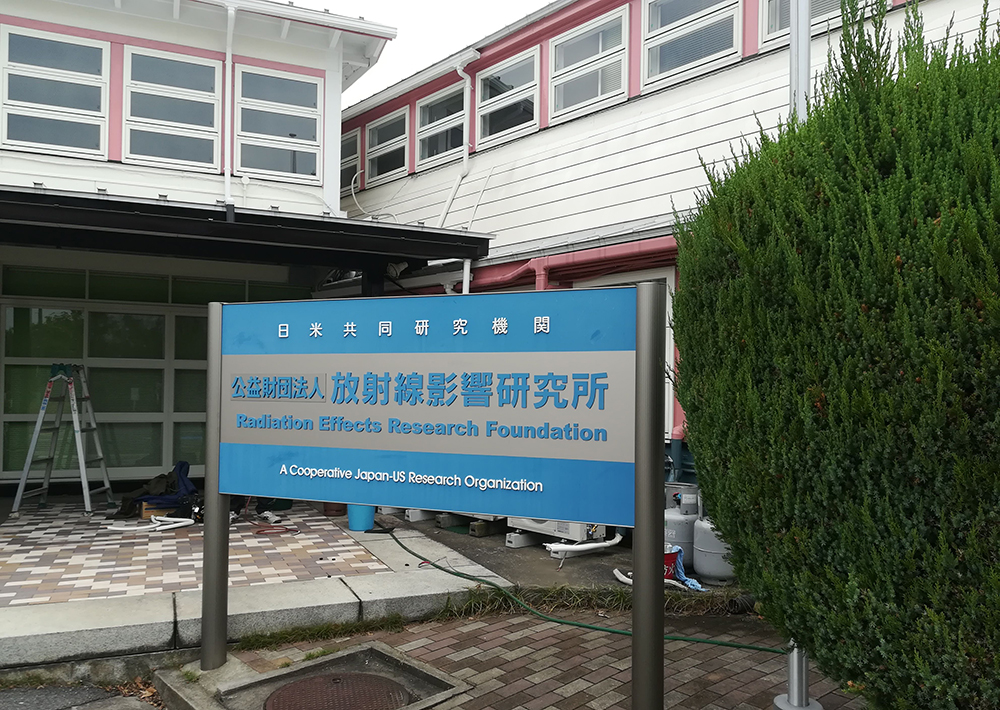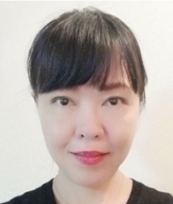[평화예술칼럼 Peace Art Column] (113) 토미야마 카즈미
제주도는 평화의 섬입니다. 항쟁과 학살의 역사를 가지고 있기에 평화를 염원하는 마음은 더욱 간절할 수 밖에 없습니다. 제주4.3이 그렇듯이 비극적 전쟁을 겪은 오키나와, 2.28 이래 40년간 독재체제를 겪어온 타이완도, 우산혁명으로 알려진 홍콩도 예술을 통해 평화를 갈구하는 ‘평화예술’이 역사와 함께 현실 속에 자리 잡고 있습니다. 이들 네 지역 예술가들이 연대해 평화예술운동을 벌이고 있습니다. 이들의 평화예술운동에 대한 창작과 비평, 이론과 실천의 공진화(共進化)도 매우 중요합니다. 독립언론 [제주의소리]가 네 나라 예술가들의 활동을 ‘평화예술칼럼(Peace Art Column)’을 통해 매주 소개합니다. 필자 국적에 따른 언어가 제각각 달라 영어 일어 중국어 번역 원고도 함께 게재합니다. [편집자 글]

<맨발의 겐>은 히로시마 출신 만화가 나카자와 케이지(1939~2012)가 1973년부터 1987년까지 발표한 만화 작품이다. 자신의 피폭 체험을 바탕으로 한 이 이야기는 한국어를 포함해 여러 언어로 번역되고 있으며, 아는 독자도 많을 것이다. 주인공 소년 겐은 1945년 8월 6일 미국이 투하한 원폭에서 기적적으로 살아나지만 아버지와 누나, 남동생을 불길에 잃고 살아남은 어머니와 함께 참화의 히로시마를 헤쳐 나간다. 나카자와는 원폭 투하 후 히로시마를 그것을 바로 경험한 사람이기 때문에 그릴 수 있는 처절함으로 묘사한다. 어렸을 때 <겐>을 읽은 나만 해도 그을린 피부가 축 늘어지고 두발이 갑자기 많이 빠지며 큰 화상을 입은 몸에 구더기가 고여 토혈과 하혈로 얼룩져 물을 찾는 사람들의 모습이 마음에 새겨졌다. 그것은 만화잡지의 작은 팽이라고는 생각되지 않을 정도의 강렬한 힘으로 인류가 처음 겪은 핵의 공포를 전한 것이다. 그리고 왜 이 사람들이(나가사키도 그렇다) 이런 것들의 실험대로 뽑혀야 했는지, 아무리 전쟁이라도 해도 좋을 것과 나쁜 것들이 있지 않을까 하는 생각이 들었다.
원폭 피해자의 삶은 고난으로 가득했다. 불탄 자리의 원폭 고아들이 거친 생활에 빠지는 모습에 마음이 아프다. 더욱이 원폭증으로 불리는 방사능 장애는 시간이 흐른 뒤 갑자기 나타나 목숨을 앗아간다. 그 불안과 싸우면서 피폭자를 더러운 존재처럼 차별하는 냉혹한 처사를 견뎌야 했다. 하지만 이처럼 절망적인 상황에서도 겐은 신기한 생명력으로 독자들의 공감을 자아낸다. 그는 깡패와 사기꾼에 맞서며 어머니와 전장에서 태어난 여동생, 새로 가족공동체에 들어온 소년들과의 생활을 지키기 위해 안간힘을 쓰고 있다. 곧은 겐의 눈빛은 이 작품이 오래 애독되는 큰 이유일 것이다. 히로시마 시내 초등학교 3학년 학생들이 사용하는 평화학습 교재에도 겐을 그린 만화는 20년에 걸쳐 게재되어 왔지만 히로시마시 교육위원회는 교재에서 앞으로는 겐을 삭제하기로 결정했다.(중국신문 디지털 2월 16일 11:10 전달)
교육위원회의 설명에 의하면, 겐이 길거리에서 낭곡을 불러 투전을 벌어 가계를 돕고, 또 영양실조의 어머니에게 먹이려고 연못의 잉어를 훔치는 등의 장면이 「아동의 생활 실태에 맞지 않는다」, 「오해를 줄 우려가 있다」라는 지적이 있었던 것에 대응해, 더욱이 가옥에 깔린 아버지가 겐에게 도망치도록 재촉하는 장면도 삭제한다고 한다. 아무래도 기묘한 이유가 아닌가. 이들 논자는 생활실태에 맞는 전쟁체험을 가르칠 수 있다고 생각하는가. 실제로 벌어지고 있는 러시아-우크라이나 전쟁을 교재로라도 삼을 것인가. 그러나 히로시마의 아이들은 먼저 히로시마에서 일어난 일을 알아야 한다. 당신과 같은 히로시마의 아이 겐이 전쟁과 전후를 어떻게 살아냈는가를.

<맨발의 겐>을 둘러싸고 2012년 시마네 현 마쓰에 시교육위원회가 시내 학교도서관에서 이 작품을 개가에서 폐가 서고로 옮겨 사실상 열람을 제한하는 문제도 불거졌다. 이 배경에는 시의회에 대한 한 진정인이 이 작품이 천황을 모욕하고 있지도 않은 일본군의 만행을 그려 아이들에게 잘못된 역사인식을 심어주고 있다며 학교도서관 철거를 요구한 것이 있다. 시의회는 이 진정을 채택하지 않았지만 교육위원회는 "초중학생에게는 묘사가 과격하다"며 자율규제에 나섰다. 있지도 않은 일본군의 만행이라는 상투적인 역사수정주의를 사귈 생각은 없지만 <맨발의 겐>이라는 작품이 권력비판 정신에 바탕을 두고 있음은 분명하다. 나카자와는 겐의 아버지를 반전사상의 소유자로 묘사하고 겐도 성장함에 따라 천황의 전쟁 책임과 미국의 군사지배, 미국을 추종하는 일본에 대한 비판을 받게 된다.
겐도 아버지도 일본적 동조 압력에 굴하지 않고 비국민으로 불리는 것을 두려워하지 않는 캐릭터다. 겐이 전하고 있는 것은 목숨을 유린하는 전쟁을 일본 열도를 자주 덮치는 대지진이나 쓰나미 같은 경외스러운 자연재해와 혼동해서는 안 된다는 것, 만약 전쟁이 일어났다면 반드시 그 책임을 져야 할 자가 존재한다는 것이다. 겐이라는 표상을 시대에 맞지 않는다며 잘라내려는 움직임은 전쟁의 원인과 잔학함에서 사람들의 시선을 돌리려는 권력측의 의도와 동조적이다. 미국이라는 나라가 이 사상 최악의 폭탄을 던졌다는 사실까지도 깎아주면서 국가의 전쟁체제에 협조를 마다하지 않는 일본 국민임이 다시 요구되기 시작한 지금이야말로 핵폭발 후 폐허에 다다른 겐의 이야기를 되새길 필요가 있다고 강하게 생각한다.


# 토미야마 카즈미
토미야마 카즈미(豊見山和美 TOMIYAMA Kazumi) 씨는 도쿄 소재 추오대학교와 류큐대학교 대학원에서 법학을 전공했으며, 영국 런던대학교 아카이브연구 석사과정을 마쳤습니다. 이후 오키나와현립공문서관의 아키비스트로 일하면서, 오키나와 전후사를 중심으로 문화평론을 하고 있습니다.
<はだしのゲン>は時代遅れか―1945年8月6日、ヒロシマの少年
豊見山和美
<はだしのゲン>は、広島出身の漫画家である中沢啓二(1939-2012)が1973年から1987年にかけて発表した漫画作品だ。自身の被爆体験に基づくこの物語は、韓国語も含めて複数の言語に翻訳されており、ご存じの読者も多いだろう。主人公の少年・ゲンは、1945年8月6日にアメリカが投下した原爆から奇跡的に助かるが、父や姉、弟を炎に失って、生き残った母とともに惨禍の広島を生き抜いていく。中沢は、原爆投下後の広島を、それをまさに経験した者だからこそ描けるようなすさまじさをもって描写する。子どもの頃に<ゲン>を読んだ私にしても、焼けただれた皮膚がずるりと垂れ下がり、頭髪が突然大量に抜け落ち、大やけどを負った体に蛆がたかり、吐血や下血にまみれて、水を求める人々の姿は心に焼き付いた。それは漫画雑誌の小さなコマとは思えないほど強烈な力で、人類が初めて体験した核の恐怖を伝えたのだ。そして、なぜこの人々が(長崎もそうだ)こんなことの実験台に選ばれねばならなかったのか、いくら戦争でもやっていいことと悪いことがあるではないかと、理不尽な思いにかられた。
原爆の被害者の人生は苦難に満ちたものだった。焼け跡の原爆孤児たちが荒んだ生活に堕ちる様子に心が痛くなる。さらに原爆症と呼ばれる放射能障害は、時間が経った後に突如現れて命を奪ってゆく。その不安と闘いながら、被爆者を汚れた存在のように差別する冷たい仕打ちに耐えなければならなかった。しかし、これほど絶望的な状況でも、ゲンは不思議な生命力で読者の共感を誘う。彼はヤクザや詐欺師に立ち向かいながら、母や、戦場で生まれた妹、新しく家族共同体に入った少年らとの生活を守るために必死だ。まっすぐなゲンの瞳の輝きは、この作品が長く愛読される大きな理由だろう。広島市内の小学校3年生が用いる平和学習教材にも、ゲンを描いた漫画は20年にわたって掲載されてきたが、広島市教育委員会は教材から今後はゲンを削除する決定をした。(中國新聞デジタル 2月16日11:10配信)
教育委員会の説明によれば、ゲンが路上で浪曲を歌って投げ銭を稼いで家計を助け、また栄養失調の母親に食べさせようと池のコイを盗むなどの場面が「児童の生活実態に合わない」「誤解を与える恐れがある」との指摘があったことに対応し、さらに家屋の下敷きになった父親がゲンに逃げるよう促す場面も削除するという。どうにも奇妙な理由ではないか。これらの論者は「生活実態に合った」戦争体験を教えることができると考えているのだろうか。現に起きているロシアーウクライナ戦争を教材にでもするのだろうか。しかし広島の子供たちはまず広島で起こったことを知るべきだ。あなたと同じ広島の子・ゲンが戦争と戦後をどう生き抜いたかを。
<はだしのゲン>をめぐっては、2012年、島根県松江市教育委員会が、市内の学校図書館でこの作品を開架から閉架書庫へ移して事実上閲覧を制限するという問題も起こっていた。この背景には、市議会へのある陳情者が、この作品は天皇を侮辱し、ありもしない日本軍の蛮行を描いて子どもたちに間違った歴史認識を植えつけているとして、学校図書館からの撤去を求めたことがある。市議会はこの陳情を採択しなかったが、教育委員会は「小中学生には描写が過激」として自主規制に出た。「ありもしない日本軍の蛮行」というお決まりの歴史修正主義に付き合う気はないが、<はだしのゲン>という作品が権力批判の精神に基づいていることは確かである。中沢はゲンの父を反戦思想の持ち主として描き、ゲンも成長するにつれて天皇の戦争責任やアメリカの軍事支配、アメリカに追従する日本への批判を託される。ゲンもその父も日本的な同調圧力に屈せず、「非国民」と呼ばれることを怖れないキャラクターだ。ゲンが伝えているのは、命を蹂躙する戦争を、日本列島をしばしば襲う大地震や大津波のような畏怖すべき自然災害と混同してはならないこと、もし戦争が起こったならば必ずその責を負うべき者が存在するということだと言える。ゲンという表象を「時代に合わない」として切り捨てようという動きは、戦争の原因と残虐さから人々の目を逸らしたいという権力側の思惑と同調的だ。アメリカという国がこの史上最悪の爆弾を投げたという事実までも値引きし、国家の戦争体制に協力を厭わない「日本国民」であることが再び求められ始めた今こそ、核爆発後の廃墟に立ちつくしたゲンの物語をひもとく必要があると強く思う。
Is <Barefoot Gen> Out of Date? - A Boy in Hiroshima, August 6, 1945
Kazumi TOMIYAMA
<Barefoot Gen> is a manga by Hiroshima-born manga artist Keiji NAKAZAWA (1939-2012), published between 1973 and 1987. Based on his own experience of the atomic bombing, the story has been translated into several languages, including Korean, you may be familiar with it. The main character, Gen, miraculously survives the atomic bomb dropped by the U.S. on August 6, 1945, but loses his father, sister, and brother to the flames, and survives the devastation of Hiroshima with his surviving mother. Nakazawa describes Hiroshima after the atomic bombing with the kind of gruesomeness that only someone who has experienced it firsthand could depict. Even for me, who read Gen as a child, the images of burnt skin hanging down, hair suddenly falling out in great profusion, maggots gathering on badly burned bodies, and people covered in vomit and blood, begging for water, were seared into my mind. The images conveyed the horror of mankind's first experience with nuclear weapons with such intensity that it is hard to believe that they were small panels in a comic book magazine. I was also struck with an irrational feeling as to why these people (as well as Nagasaki) had to be chosen as test subjects for such a thing, no matter how much warfare there might be.
The lives of the victims of the atomic bomb were filled with hardship. It is heartbreaking to see the A-bomb orphans in the burnt ruins fall into a rough life. Furthermore, radiation damage, known as atomic bomb sickness, suddenly appears after a long time and takes their lives. While struggling with this anxiety, the Hibakusha had to endure cold treatment that discriminated against them as if they were unclean beings. Yet even in such a hopeless situation, Gen evokes the reader's sympathy with his mysterious vitality. He struggles to protect his life with his mother, his sister who was born on the battlefield, and the boys who have newly joined his family community, all the while confronting the yakuza and con artists. The brightness of Gen's straightforward eyes is probably the main reason why this work has been loved for so long. For 20 years, a manga depicting Gen has been included in peace education materials used by third-grade elementary school students in Hiroshima City, but the Hiroshima City Board of Education has decided to remove Gen from the materials from now on. (Chugoku Shimbun Digital, February 16, 11:10)
According to the Board of Education, the scenes in which Gen sings traditional Japanese songs on the street to earn money to help his family and steals carp from a pond to feed his malnourished mother have been pointed out as "not fitting the reality of current children's lives" and "potentially misleading. The father, who was trapped under the house, urging Gen to run away, will also be removed from the materials. This sounds very strange. Do these commentators believe that it is possible to teach war experiences that "fit the realities of life"? Do they use the ongoing Russian-Ukrainian war as a teaching tool? But the children of Hiroshima should first know what happened in Hiroshima. How the children of Hiroshima, just like you, lived through the war and the postwar period.
In 2012, the Matsue City Board of Education in Shimane Prefecture effectively restricted access to <Barefoot Gen> by moving it from the open stacks to the closed stacks at school libraries in the city. The background to this was that a petitioner to the city council demanded that the work be removed from school libraries on the grounds that it insulted the emperor and portrayed the barbaric acts of the Japanese military, which never happened, to instill in children a false sense of history. The city council did not adopt the petition, but the board of education voluntarily restricted the book, saying that the depictions were too extreme for elementary and junior high school students. While I have no desire to go along with the usual historical revisionism of "the barbaric acts of the Japanese military, which never happened," it is clear that <Barefoot Gen> is based on a spirit of criticism of power. Nakazawa portrays Gen's father as an anti-war ideologue, and as Gen grows up, he is entrusted with criticism of the emperor's responsibility for the war, American military rule, and Japan's subservience to the US. Both Gen and his father are characters who do not yield to Japanese peer pressure and are not afraid to be called "unpatriotic. Gen's message is that wars that violate lives should not be confused with awe-inspiring natural disasters such as the great earthquakes and tsunamis that often strike the Japanese archipelago, and that when war breaks out, there is always someone to blame for it. The move to dismiss the representation of Gen as "out of touch" is in sync with the desire on the part of those in power to distract people from the causes and atrocities of war. At a time when we are once again being asked to be "Japanese Nationals" who are willing to cooperate with the nation's war system, even discounting the fact that the U.S. threw the worst bomb in history, I strongly believe that we need to look into the story of Gen, who stood in the ruins after the nuclear explosion.

